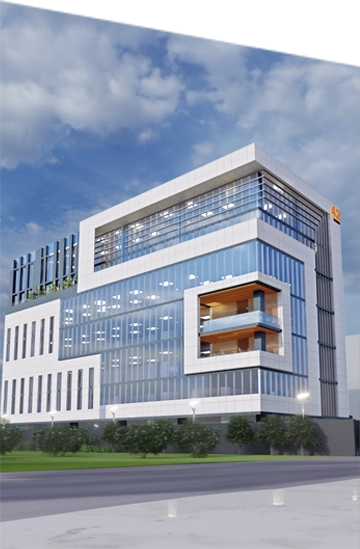WordPress has recently announced that the upcoming release of version 6.3, set to launch in August 2023, will bring significant improvements to help websites achieve higher Core Web Vitals SEO scores. These improvements will particularly focus on enhancing the Largest Contentful Paint (LCP) metric.
While page speed holds a relatively small weight in Google’s ranking algorithm, it plays a crucial role in driving higher sales and improving ad views and clicks. Prioritizing a good user experience is essential as it not only increases user engagement on a website but also encourages repeat visits.
In this blog post, we will explore the key changes and enhancements that WordPress 6.3 will introduce, paving the way for a more optimized and user-friendly web experience.
Largest Contentful Paint
Largest Contentful Paint (LCP), a metric utilized to gauge the rendering time of the largest image or text block on a webpage, provides valuable insights into users’ perception of page load speed.
The LCP metric focuses on what the site visitor experiences within their browser’s viewport. It captures the visual elements that are immediately visible upon page loading.
With the enhancements introduced in WordPress 6.3, a significant milestone is reached in optimizing Core Web Vitals performance. These optimizations involve the precise utilization of HTML attributes on specific elements, aiming to deliver the best possible user experience in terms of page loading speed and performance.
Fetch Priority HTML Attribute
Fetch Priority, represented as fetchpriority in HTML, serves as an HTML attribute assigned to webpage elements like images, CSS, and JavaScript.
The primary function of fetchpriority is to instruct the browser on the optimal order for downloading webpage resources, ensuring that the content visible within the site visitor’s viewport is prioritized.
Resources located below the viewport, which require scrolling to be seen, possess a lower priority compared to the content positioned at the top of the page and immediately visible to site visitors.
By leveraging Fetch Priority, publishers gain control over resource prioritization, enabling them to assign higher or lower priority to specific resources.
Introducing a notable enhancement, WordPress 6.3 now features a new capability that incorporates the fetchpriority attribute to the image that is most likely to appear within the site visitor’s viewport. This enhancement further empowers publishers to optimize content delivery for an improved user experience.
According to the announcement, “WordPress now automatically assigns the fetchpriority attribute with a “high” value to the image that best represents the LCP image – the largest content block in a viewer’s viewport. This prioritizes the download of the said image, even before the layout is calculated, leading to a 5-10% improvement in LCP.”
One of the most significant advantages of WordPress’s implementation of fetchpriority is that it only applies to images that exceed a minimum size threshold. This ensures that smaller resource elements like navigation buttons are not affected unnecessarily.
Furthermore, WordPress’s automated fetchpriority feature is designed never to override any existing fetchpriority attributes, enabling publishers to retain complete control over their resource prioritization.
Lazy Load Implementation Perfected
When a site visitor accesses a website in their browser, the initial content that appears on their screen is referred to as the viewport. It is essential to prioritize the webpage elements required to render this first viewport.
Elements located below the first viewport do not need to be immediately downloaded. Lazy loading is a technique used to inform the browser about which images and iframes are non-critical for the initial viewport display.
By utilizing the lazy load attribute, the browser can prioritize the download of essential webpage elements. In the past, WordPress applied the lazy load attribute to all images on a page, regardless of their importance for rendering above-the-fold content. Though not ideal, tests indicated that this approach still resulted in an improvement compared to not utilizing lazy loading.
However, WordPress 6.3 addresses this issue by implementing a detection system to identify critical images. As a result, the lazy load attribute will not be applied to these critical images, ensuring they can be downloaded as quickly as possible.
As per WordPress, “Further adjustments and fixes have been implemented to improve the automatic handling of lazy-loading via the loading attribute to more reliably detect when to omit the attribute from some images.”
Finally, the updated method of detecting the initial viewport and implementing fetchpriority and loading attributes opens up possibilities for additional optimizations in future iterations of WordPress.
According to WordPress’ official statement, they indicate that this capability could be enhanced further by incorporating other performance-related attributes in the future.
WP 6.3 Will Not Override Related Custom Optimization
An important consideration in this update is that the automatic application of fetchpriority and lazy load will preserve any custom implementations of these attributes and will not override them.
The announcement highlights that with the consistent implementation of the new function for rendering images throughout WordPress core, there is also enhanced support for customization.
“The function will never override attributes that are already provided, so if you set a fetchpriority or loading attribute on an image before this function is called, the attribute will be kept as is. This allows fine-tuning by not enforcing the default automated behavior. If doing so, keep in mind never to set both fetchpriority=”high” and loading=”lazy” for an element. If the function encounters those two attribute-value combinations together, it will trigger a warning.”, said WordPress in its official announcement.
Better Core Web Vitals SEO Performance Results For WordPress
Apart from the aforementioned updates, WordPress has addressed various bugs that previously hindered the correct implementation of these attributes that aim to optimize Largest Contentful Paint.
With the release of WordPress 6.3, image optimization for SEO has been fully optimized, providing an optimal SEO experience that may help websites achieve higher LCP scores.




